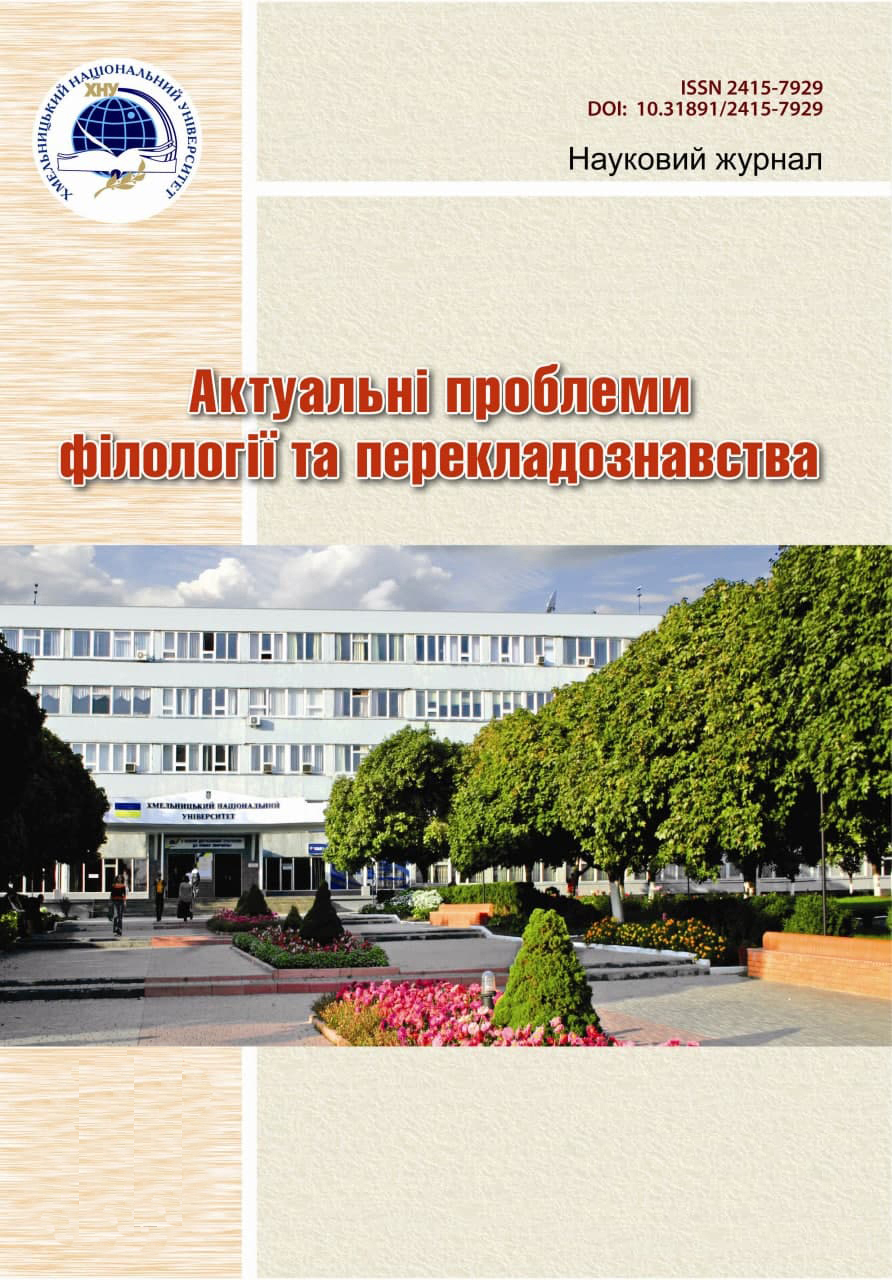THE USE OF SYNTACTIC MEANS IN THE TRANSLATION OF ANIMATED FILMS
DOI:
https://doi.org/10.31891/2415-7929-2025-34-7Keywords:
syntactic means, spoken language, animated film, film translation, stylistic meansAbstract
The article deals with the peculiarities of reproducing spoken language in the translation of the English-language cartoon ‘Inside Out’ and ‘Inside Out 2’ into Ukrainian by Fedir Sydoruk, Le Doyen Studio.
Among the syntactic means of reproducing spoken language in translation, we have considered the following: ellipsis, nominal clauses, aposiopesis, asyndeton and parcellation as those that shorten the sentence model; repetition, enumeration, tautology, polysyndeton, parallelism, which expand the sentence model; inversion, separation of sentence members - syntactic means that change the order of words and those responsible for transposition of the sentence meaning, namely, rhetorical questions. Each of these means serves to make speech more expressive, dynamic and informal, depending on the specific situation in the text. Among the most frequently used in the studied material are elliptical sentences and parcellation, the technique of stylistic repetition - several types of it, identified on the basis of the study of theoretical materials, and the technique of polysyndeton. The analysis of the Ukrainian-language text has revealed that the translation used, as a rule, identical syntactic constructions to reproduce spoken speech in the target language and preserve the isochronism and dramatic synchronism of the animated film.
Downloads
Published
Issue
Section
License
Copyright (c) 2025 Ганна УДОВІЧЕНКО, Ольга ГЕРАСИМОВА, Антон ХОМИЧ (Автор)

This work is licensed under a Creative Commons Attribution 4.0 International License.

